Todaiji (東大寺), which literally means “eastern great temple”, was first constructed in 752 and is a waif of what it used to be. It has some crazy history behind it. At one point it so powerful that it single-handedly moved the capital of Japan away from Nara.
Check this one off your UNESCO World Heritage Site list while you’re visiting the deer in Nara.
[Editor’s Note: This post was originally published in July of 2018 and has been updated for freshness, accuracy, and comprehensiveness.]
Japan’s Largest Temple Gate
This whole post is going to be about a lot of “largest” or as I like to say, a competition of status (there’s a lot of that in Japan). Walking through Nara Park from the station, you’ll enter the Todaiji complex through its “Great South Gate” which is the largest temple entrance in Japan.
There are 18 supports that hold the roof a staggering 25.46 meters in the air. Make sure you check out the guardians on your way through. They are referred to as 仁王 (ni-ou, two kings) and are the guardian gods of Buddhism who stand at the entrance of a Buddhist temple. These ones happen to date back to 1203 AD though!
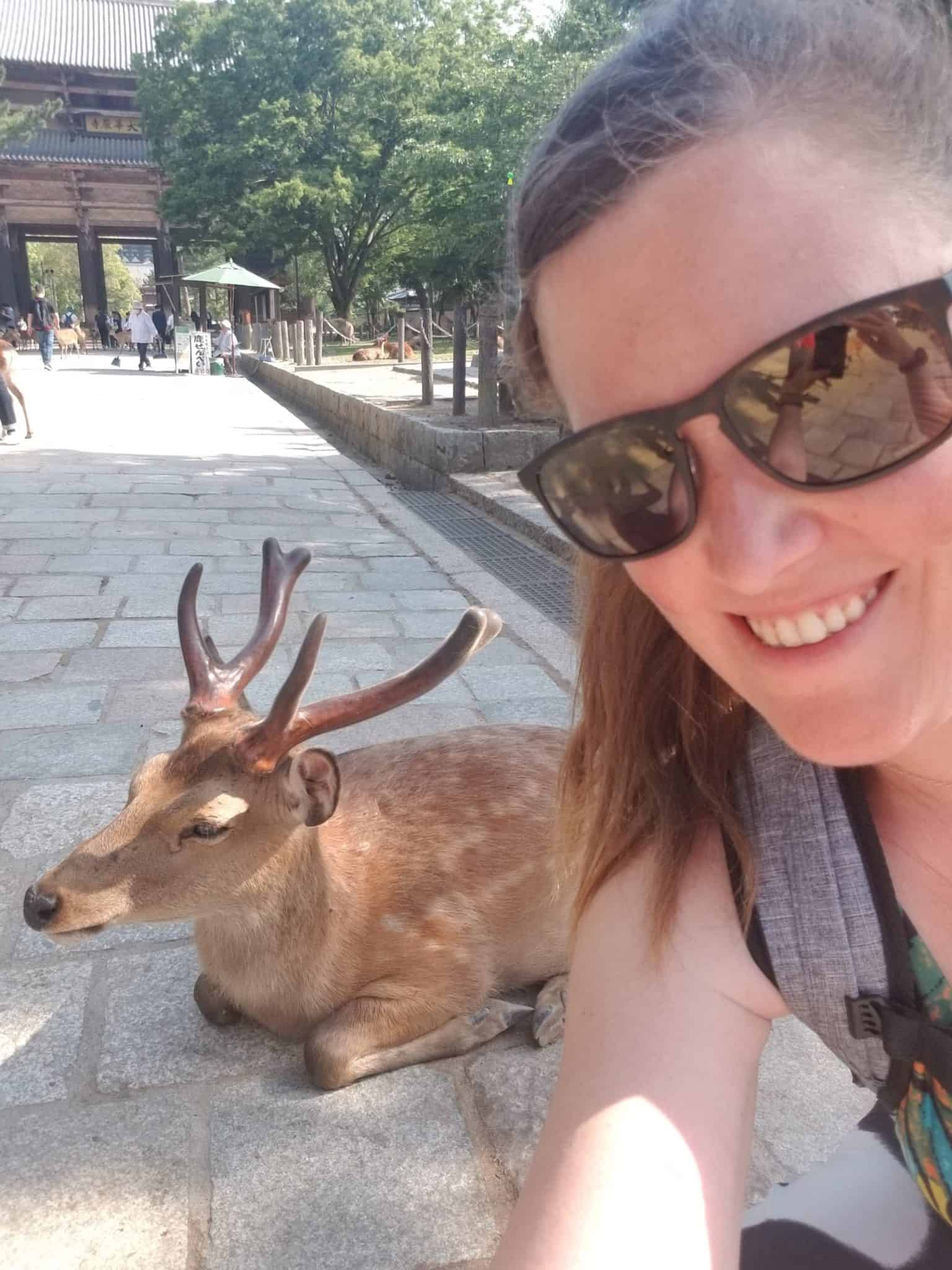
大仏殿 Daibutsuden (Big Buddha Hall)
While there are many websites including Todai-ji, claiming that the main hall Daibutsuden (Big Buddha Hall), is the world’s largest wooden building, Guinness doesn’t back that up. The 1692 reconstruction isn’t to be missed though! (Like many things in a country where wood construction prevailed, it’s been rebuilt.) Only two-thirds the original size (eek!) it’s a sight to be seen even if not it’s full original glory. Daibutsuden or the Big Buddha Hall at Todaiji height and depth remain the same but it originally was much wider.
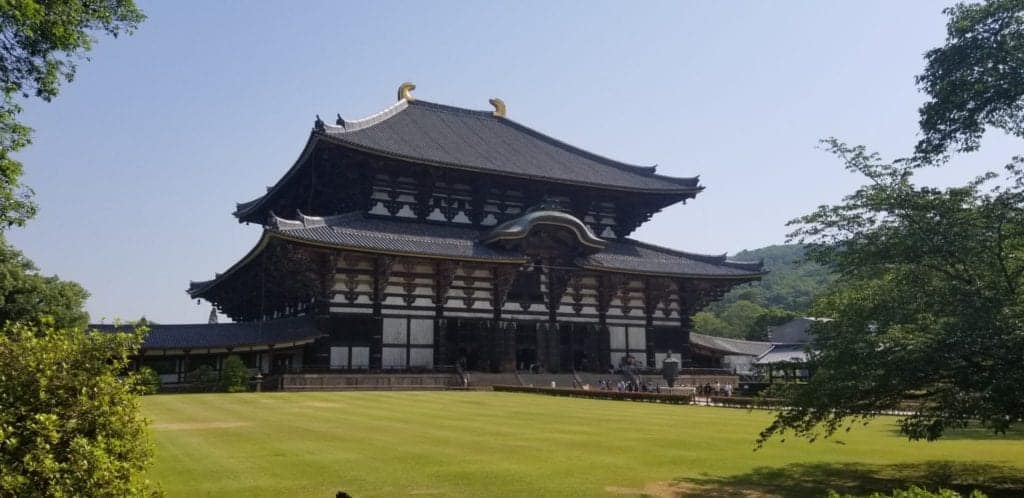
That’s one big Buddha…
Speaking of skewed records, Nara’s own website claims that the Buddha housed inside is Japan’s largest Buddha statue. At just under 15 meters high, it’s big but a more proper designation would be Japan’s largest Vairocana Buddha.
In Chinese, Korean, and Japanese Buddhism, Vairocana is also seen as the embodiment of the Buddhist concept of Śūnyatā. Sunyata means “emptiness” in Sanscrit.
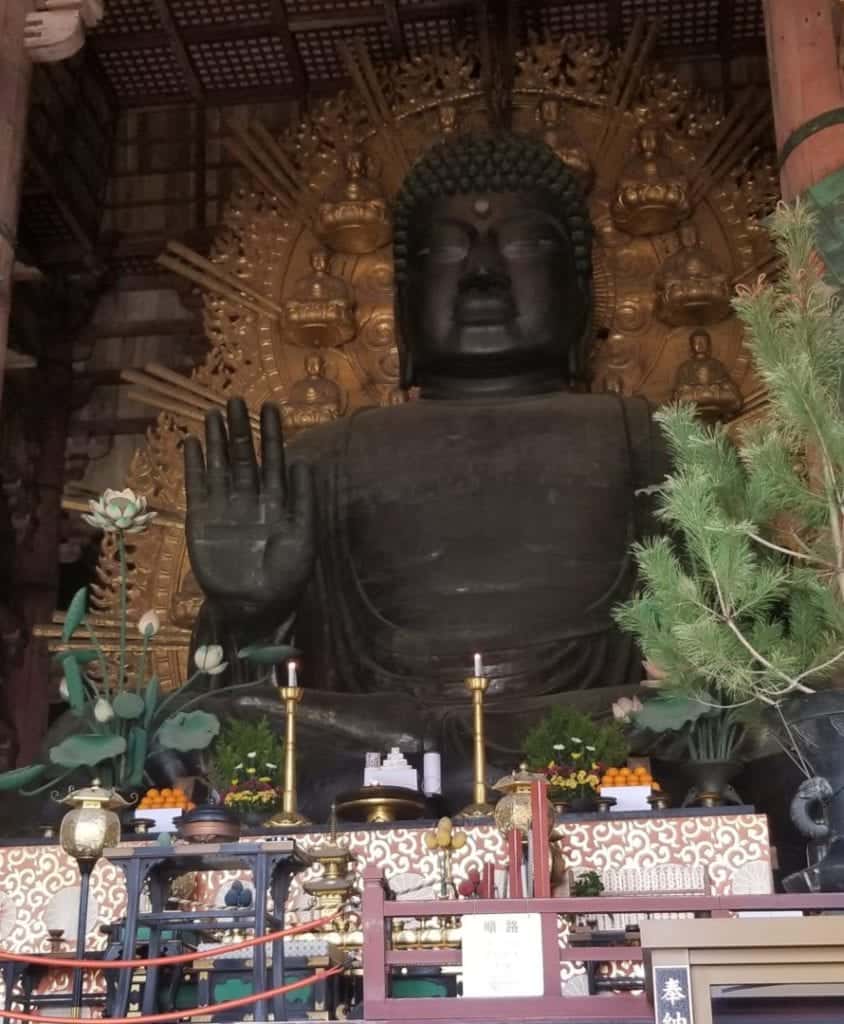
What’s my beef with people calling it the largest? For one, Takaoka Daibutsu (高岡大仏) in Toyama Prefecture is 15.85 meters. Ibaraki Prefecture would also like to take that claim with Ushiku Daibutsu (牛久大仏). At a whopping 120 meters, I’d say it takes the cake.
Original Plans of Todaiji
The original complex also contained two giant pagodas, which would have been some of the tallest, if not THE tallest structures of the time. They burned along with the rest of the complex and were never rebuilt but you can see a model inside the great hall that includes them.
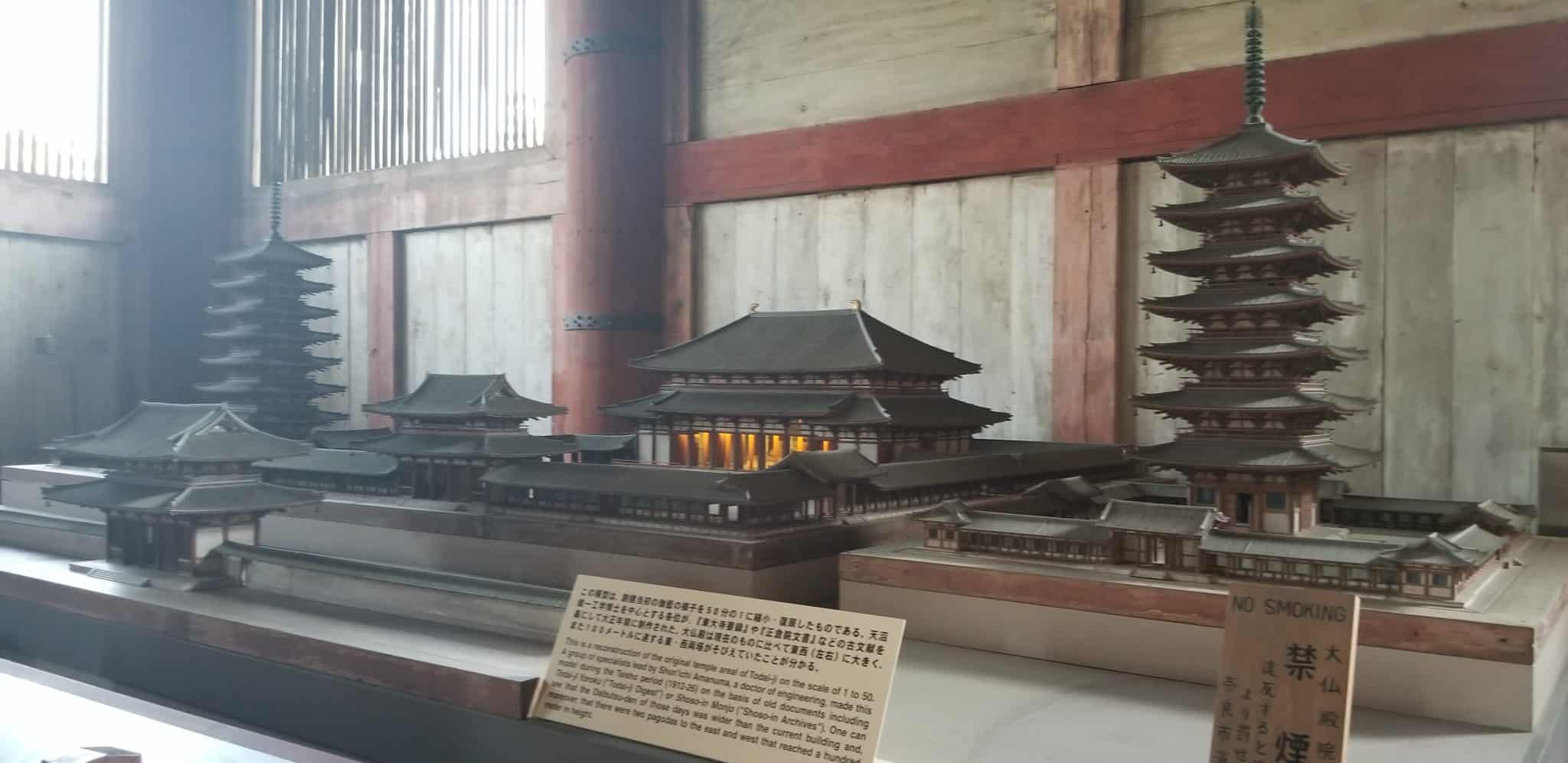
Gaining Enlightenment from Buddha’s nostril
At the base of one of the wooden pillars, there is a square cut out referred to as the Buddha’s nostril. At first, I didn’t think anything of it, “oh, wonder why there’s an opening in that one”. Until the tourists in front of me got down on all fours and started crawling through it!
This opening is called the Buddha’s nostril due to its size comparison with the bronze statue. For whatever reason, it is said that if you can pass through, that you will gain enlightenment in the next life. Enlightenment just handed to you? OK, I’ll jump, or crawl as it may be.
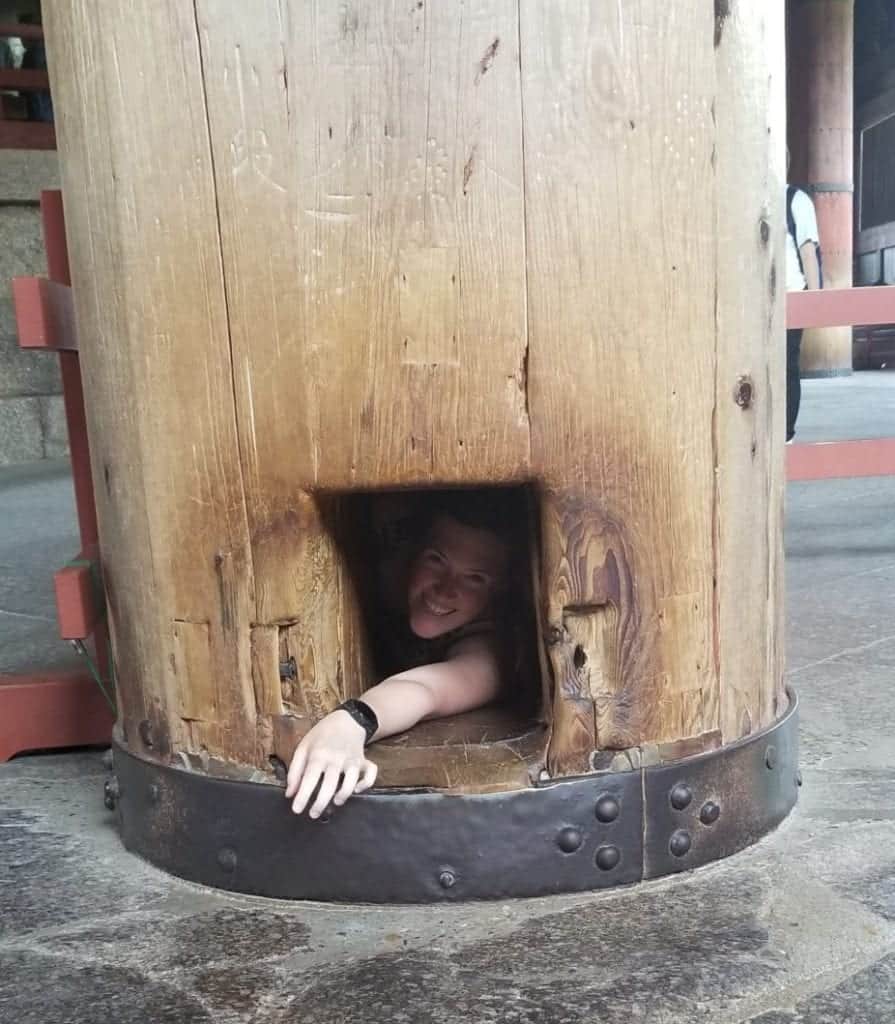
Todaiji vs. Todaiji Temple
By the way, the “ji” in Todaiji is the word for “temple” so no need to call it “Todaiji Temple”. You’d just be doubling your words.
Access to Todaiji
Entrance to the Great Buddha Hall is available every day of the year, just be sure to check the times as they shift slightly due to the seasons. The cost is 500円 for adults and 300 円 for children.
Definitely add Todaiji Temple to your list of things to do in Japan.
Pin this for later

